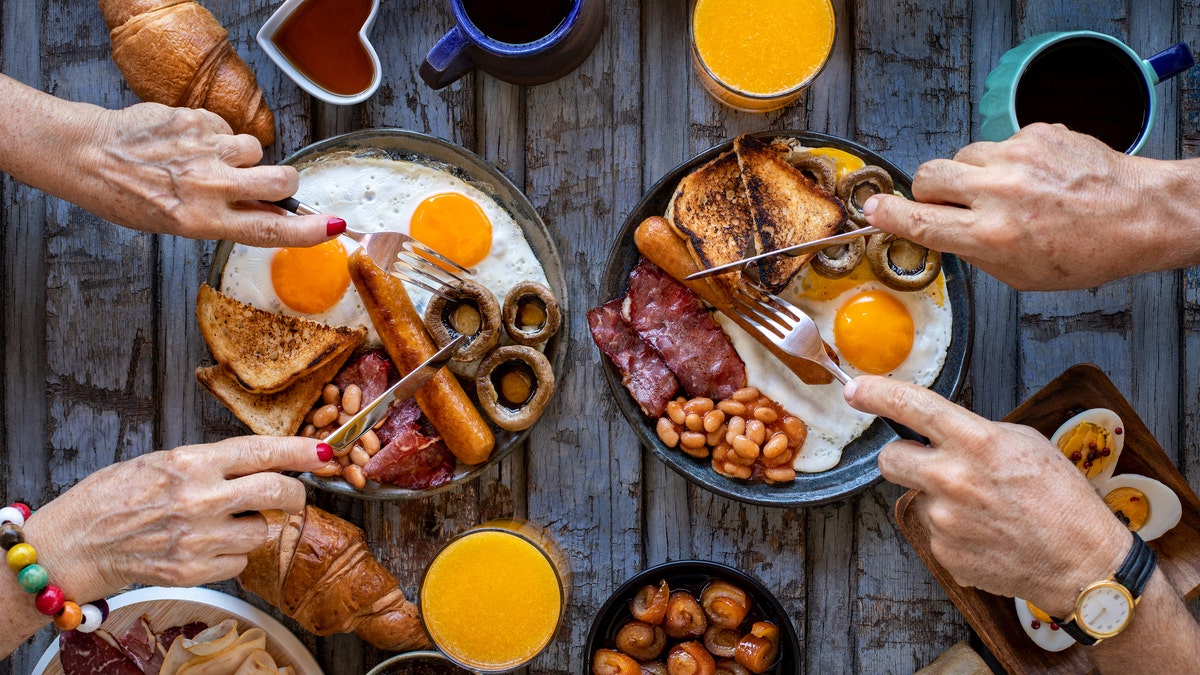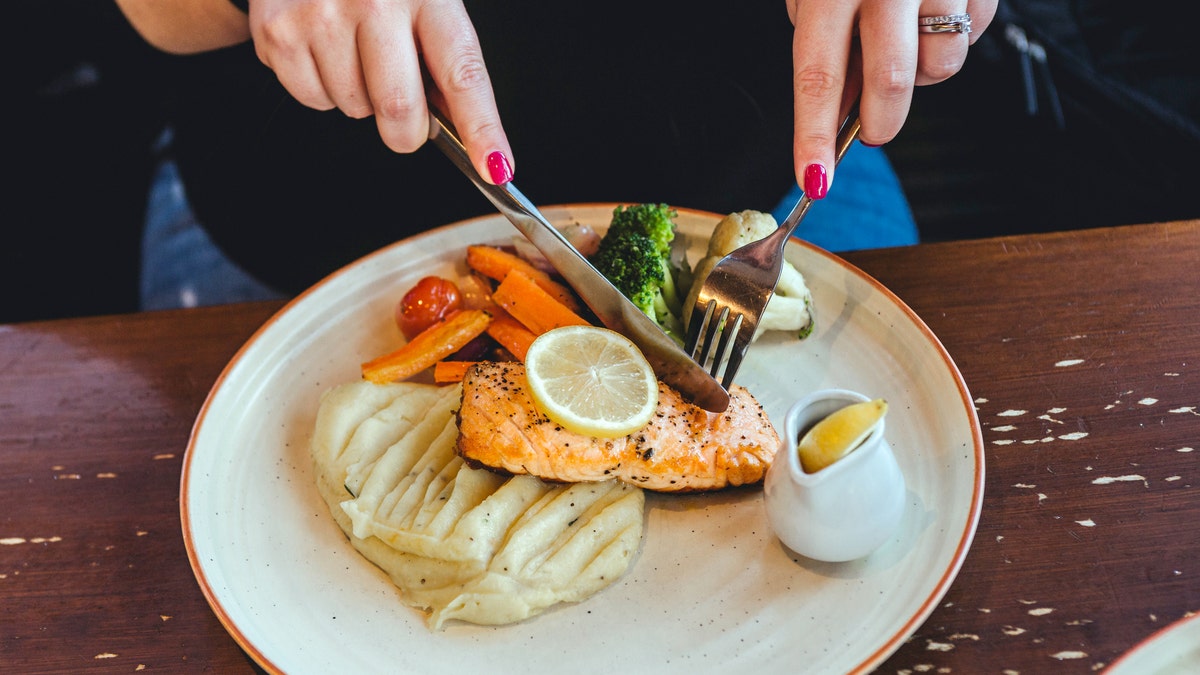Eating foods in this order could help with weight loss and blood sugar, experts say
NEWYou can now listen to Fox News articles!
The order in which you eat foods during meals may affect your health, according to some nutrition experts.
The concept — known as “meal sequencing” — involves first eating fiber-rich, non-starchy vegetables, followed by protein and then fats, before eating the carbohydrates on your plate.
This orderly way of eating may help prevent blood sugar spikes, increase feelings of fullness and help with weight loss, according to nutrition experts who spoke to Fox News Digital.
POPULAR ‘FIBERMAXXING’ DIET TREND NOT RIGHT FOR EVERYONE, NUTRITIONIST SAYS
“Starting with vegetables, protein and healthy fats — before eating starches or sugary foods — may help blunt post-meal glucose spikes,” Caroline Susie, a registered dietitian based in Dallas, Texas, told Fox News Digital.
“This effect is particularly beneficial for people with insulin resistance, prediabetes or type 2 diabetes,” said Susie, who is also a spokesperson for the Academy of Nutrition and Dietetics.

The expert noted, however, that people with diabetes should receive personalized guidance from a medical expert.
Elevated blood sugar levels (known as hyperglycemia) after meals can increase an individual’s risk for type 2 diabetes, according to a UCLA report. Controlling blood sugar levels can help benefit the treatment of diabetes and obesity.
EXPERTS REVEAL 5-STEP APPROACH TO A HEALTHIER GUT AND STRONGER IMMUNITY
Previous research published in the journal Nutrients found that patients who followed the meal sequencing method — eating vegetables before refined carbohydrates — showed a significant improvement in glycemic control and blood sugar after a five-year period, while the group that did not follow the approach did not show improvement.
“What causes the sugar spikes is eating too many carbs.”
“What causes the sugar spikes is eating too many carbs,” Sandra J. Arevalo, a New York-based registered dietitian and spokesperson for the Academy of Nutrition and Dietetics, told Fox News Digital.
“Eating them alone makes it even worse,” she cautioned. “When eating them together with protein and fiber, we are cushioning their effect by slowing their absorption.”
Meal sequencing and weight loss
In addition to lowering blood sugar levels, meal sequencing may also assist with weight loss.
Studies have shown that eating protein before refined carbs promotes the secretion of the hormone glucagon-like peptide-1 (GLP-1) from the gut, which delays gastric emptying and suppresses appetite.

“When you eat other foods first — mainly fiber-rich foods — and then you drink water, the fiber from the foods helps you feel satisfied, thus decreasing your appetite,” Arevalo told Fox News Digital.
“And let’s not forget that fiber also helps to reduce the absorption of sugar in the blood, helping to cushion your sugar levels.”
All carbs not created equal
Complex carbohydrates — such as most vegetables, beans and legumes — are rich in fiber and slow to digest, which causes a gradual rise in blood sugar levels, according to the UCLA report.
CLICK HERE TO GET THE FOX NEWS APP
Refined carbohydrates — such as sugar, white rice and white flour — have higher glycemic levels, which are easier to break down and contribute to faster blood sugar spikes.
As nutrition experts pointed out, eating fiber before refined carbohydrates can help slow the carbs’ absorption, which helps blood sugar levels stay lower during digestion.

To assist with healthier food choices and to monitor blood sugar levels after a meal, experts recommend using a food rating system called the glycemic index.
This rating scale determines how quickly certain foods can cause blood sugars to rise and fall, according to the UCLA report.
Getting started
For those interested in trying meal sequencing, Susie laid out the following steps.
CLICK HERE TO SIGN UP FOR OUR HEALTH NEWSLETTER
- Start with eating non-starchy vegetables first, as the fiber slows digestion.
- Eat protein and healthy fats. This will promote feelings of fullness and slow glucose absorption.
- Eat the carbohydrates last, as this may lead to “lower glucose excursions,” Susie said.
For more Health articles, visit www.foxnews.com/health
Everyone reacts differently to different meal plans, Arevelo noted.
Both dietitians emphasized the importance of working with a licensed registered dietitian nutritionist who can help with planning balanced meals and monitoring blood sugar levels.
